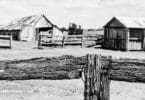If you are conducting research on your Irish ancestors in the 19th century, you will find an invaluable research resource in Griffith’s Valuation of Ireland. Often, the Valuation is the only place you will find any mention of your 19th century Irish ancestors in Ireland at all. If you locate them on the Valuation, it will provide a valuable jumping off point for searching other record collections, such as local parish registers and census records. Because it tells you where your ancestor lived, it is of exceptional value, since much of Irish genealogy research depends on knowing the exact county, town, and township (and sometimes even down to the individual parish) where your ancestor lived. Location is crucial for getting anything of importance out of other, older record sources in Ireland. Griffith’s Valuation is your best friend in making location discoveries and revelations on your Irish ancestors.
What is Griffith’s Valuation of Ireland?
Richard John Griffith was commissioned by the British government in 1825 to take a survey of land boundaries in Ireland. The survey was supposed to include every county, civil parish, barony, and townland boundary in the country. These boundaries and their locations would be used in preparation for an ordnance survey to be done later. Griffith completed the initial land boundary survey in 1844.
In conjunction with the land survey he was doing, Griffith also assisted Parliament in drafting a bill for a more extensive survey of Ireland that included enumerating landowners and tenants on the land of the landowners. He was appointed the Commissioner of Valuation in 1827, and started work on the new valuation project concurrently with the land survey project in 1830, using the maps that the land survey project was generating as a guide to the more extensive valuation.
Griffith continued work on the valuation until 1868, at which point Sir John Ball Greene took over the project. Revisions of the valuation were done annually for a time, even after the project was officially completed in 1865. Griffith did all of the valuation work, with Ball doing the annual revision work for the next few decades.
What Information Will You Find in the Valuation?
While not a census, Griffith’s Valuation of Ireland is very close to one and provides information about people living there during years when censuses were not done. There are two parts to the valuation. The first part merely values each townland in Ireland. The second part is of much more interest to genealogists. In fact, it is the only part that is of real use to genealogists. The second part took the value of individual parcels of property throughout the nation. It also includes a valuation of all of the buildings on each parcel of land. Only the houses of the gentry had been included on the first part of the valuation; the second part included everyone, even the peasant farmers.
The value of the land and the buildings was done to determine who had a responsibility to pay the Poor Rate, which was a tax in Ireland for the support of the poor. Each Poor Rate was determined within individual Poor Law Unions… areas of land that were responsible for the poor within their borders. Because this second valuation included every piece of property and building, even those that were rented, it provides excellent genealogical information.
The people who were living on the parcels of land and in the buildings that were surveyed as part of the second valuation were listed by heads of households. Therefore, Griffith’s Valuation of Ireland will show you where your Irish ancestor was living at the time of the Valuation (provided that person was ahead of household), as well as what kind of property they owned or rented. This gives you the all-important location of an Irish ancestor and also tells you a little bit about how they lived, based on the amount and type of land they owned or rented, and the number and types of buildings they owned or rented.
It took a while for Griffith to finish his valuation of Ireland. Though he began the project in 1830, the first county valuation, that of County Dublin, was not published until May 5, 1853. The last one, that of County Armagh, was not published until June 1, 1865. Revisions on these publications continued annually for some time afterward, to make sure they were always up to date and correct.
Where Can You Search Griffith’s Valuation of Ireland?
While several genealogy membership sites have the valuation, like Ancestry.com, you don’t have to pay a membership fee to search this valuable record resource. It is available to search by name for free at the Ask About Ireland website.
If you are searching for your mid-19th century Irish ancestors and having a hard time finding anything, you can’t ask for a better resource than Griffith’s Valuation of Ireland. It has the real potential to help you strike genealogical gold. Start searching it today and see what treasures you discover.
- Irish Naming Patterns: Discover Your Irish Origins from Names in a Family
- 1848-1864 Index to Griffith’s Valuation of Ireland (Free Lookups)
- Topographical Dictionaries of England, Ireland, and Scotland (Free Lookups)
- Tithe Applotment Books of Ireland, 1823-1838 (Free Lookups)
- 1831-1841 Ireland Census Index (Free Lookups)
- Irish Immigrants to North America, 1803-1871 (Free Lookups)
- Irish to America Passenger and Immigration Lists, 1846-1865 (Free Lookups)
- Irish to America Passenger and Immigration Lists Vol. 2, 1846-1886 (Free Lookups)
- Irish & British Immigrants to America, 1870-1872 Vol. 2 (Free Lookups)
- Scotch-Irish Settlers in America, 1500s-1800s (Free Lookups)
- Genealogical Records: Irish Source Records, 1500s-1800s (Free Lookups)
- The Irish Flax Grower’s List, 1796 (Free Lookups)






